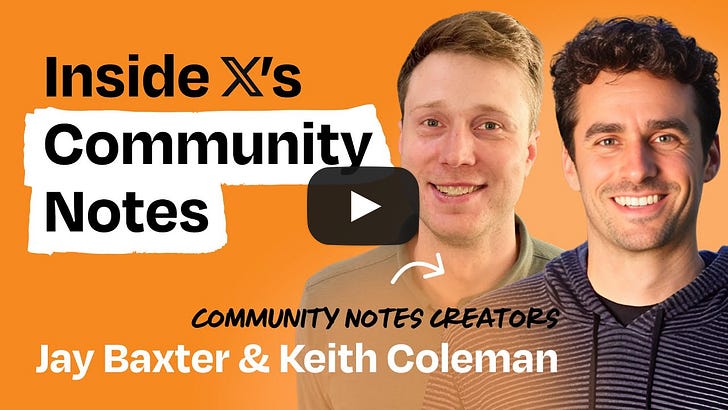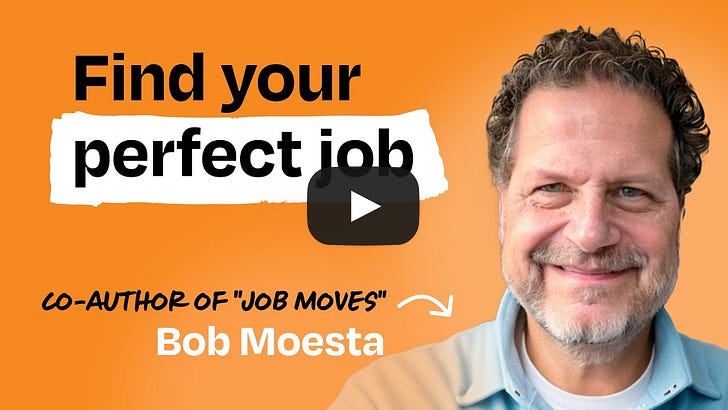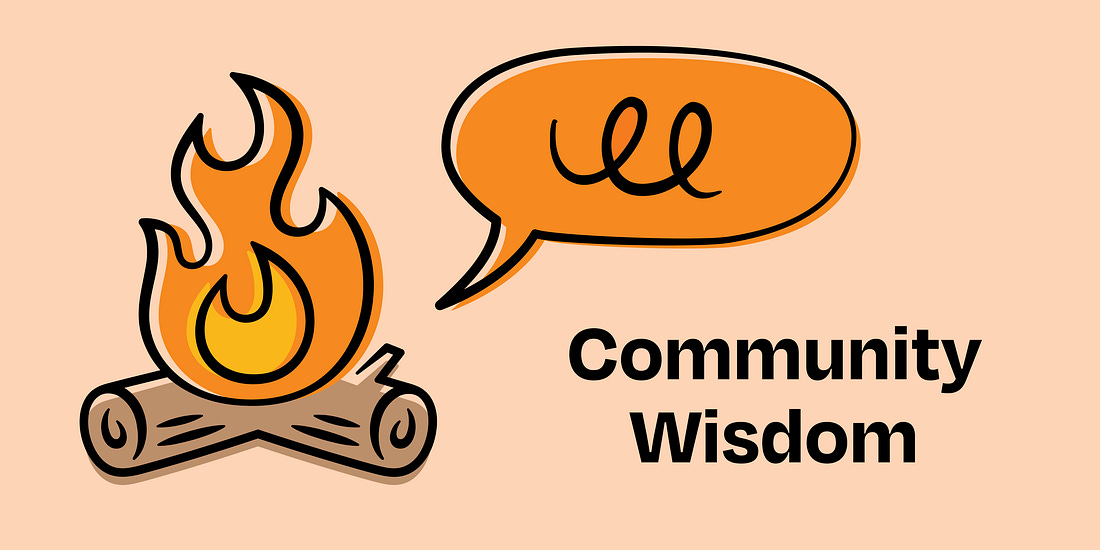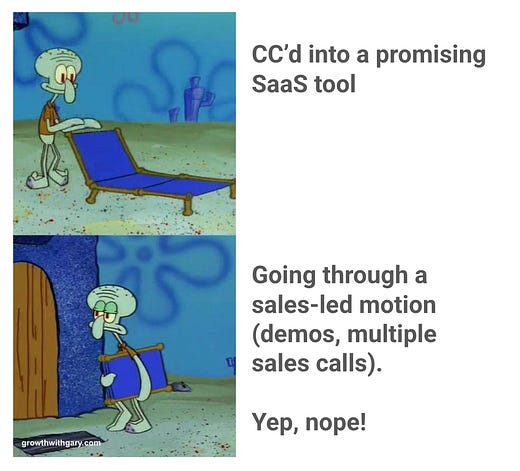🧠 Community Wisdom: Finding your voice on established teams, focus tips for ADHD brains, how to best use Granola,…
👋 Hello and welcome to this week’s edition of ✨ Community Wisdom ✨ a subscriber-only email, delivered every Saturday, highlighting the most helpful conversations in our members-only Slack community. A big thank-you to this month’s community sponsor, Chameleon. Tired of disruptive onboarding tools? Chameleon lets you guide users with inline, non-intrusive messaging that feels like part of your product, not a band-aid for bad UX. Deliver beautifully designed nudges tailored to each user’s journey, enhancing adoption and engagement without interrupting their flow. Chameleon is giving away a one-year Reforge membership at chameleon.io/lennys—check it out! 👫 Applications for the Spring 2025 cohort of our mentoring program are now open!Before you apply, we encourage you to read the program overview to understand more about the program structure, timeline, and expectations. Please make sure you have time to meet with your mentor/mentee at least 3 times between March and May before applying. Ready to apply? Sign up here: Please sign up by March 2. Have other questions? Check out our FAQs or contact us! ✨ Upcoming community meetups ✨Upcoming community-organized meetups—click the city name to RSVP:
Can’t find your city and want to host one? Just DM @Riya in our Slack. It takes 10 minutes (i.e. pick a date and location), and you get to meet awesome people from our community. Learn more here. 🎙️ New podcast episodes this weekAn inside look at X’s Community Notes | Keith Coleman (VP of Product) and Jay Baxter (ML Lead): Apple, Spotify, and YouTube  How to find work you love | Bob Moesta (Jobs-to-be-Done co-creator, author of “Job Moves”): Apple, Spotify, and YouTube  💥 Top threads this week1. Finding your voice on established teams
James Conway: What are the assumptions that need to be true for this idea to succeed? Maybe there are assumptions that aren’t being tested. I have a draft blog post about this: A - Assumptions and Assumptions Log generally...
An alternative perspective:
Joni Hoadley: How new are you to the team? There are two very important pillars when starting a new role that you don’t want to overlook: (a) building trust and (b) establishing credibility. If you haven’t yet done that, it may be too soon to be aggressive in evaluating (and changing) the short-term roadmap. Instead, you may want to focus on finding some quick wins that allow you to accomplish (a) and (b) while in parallel spinning up some discovery activities for the following quarter. S Isaac: The first few months of a new PM role are for gathering context and onboarding, not setting a quarterly roadmap. (You can try, but it’ll be wrong 🙂) If there’s already a roadmap, that sounds like a good thing! You can focus on learning the domain and how the team executes without worrying about creating busywork for them before you know what’s going on. Sri Ram: Focus on talking to your customers and stakeholders. It is ok if your current leaders have clear view of the roadmap. You will have time and opportunity to influence over the long term if you build a strong understanding of the market landscape and customer needs. Develop an opinion of your product strategy and where this product fits into the company strategy. Look for little wins to build credibility in the first 30-90 days. John Conneely: One thing that is working for me at the moment is to come up with high-level user stories for the upcoming body of work—very high-level, just showing the 1 or 2 main tasks they want the main 3 or 4 personas to accomplish. Once you get buy-in for those user stories from the senior stakeholders, “flip” them into problems and build an opportunity solution tree with those high-level problems as the higher branches on the tree. Once you lay out all the other problems/opportunities and group them under the high-level problems, it will show your discovery chops, and you might identify some quick wins along the way that can be tackled along with the initiatives that have already been scoped out. With time, these methods can turn into some nice continuous-discovery practices on your team. Building relationships, product sense and proving your worth are pretty key parts to your first few months. If you spot some quick wins that line up with stakeholders who you will be spending time with on future initiatives, focus on those too. Guy Peled: What @Joni Hoadley wrote. The reason you want quick wins is to establish credibility. Credibility early on is more achievable via investing in the relationship (trust) and not via conveying your product competence. So be useful to them. Flesh out their assumptions. Be more of a product coach for them and not another unconvinced stakeholder that they have to deal with. This will set you up better for the future when you do have an established opinion. 2. Having internal teams pay for product usage
Ilya Subkhankulov: At a robotics company with a huge cloud budget for model training and inference, we had a small 1-2-person team that tracked granular usage and allocated per-team budgets. It was very hard to internalize an actual cost that internal teams had to “pay.” The only practical way is to set and enforce limits. In parallel, work to make efficiency gains. Kashmira Patel: Yeah what Ilya said. Guardrails and budgets in resource usage. Peter Berg: If you feel like you could design a set of rate limits that would solve the platform team’s problem while still enabling the downstream team to do whatever they need to, that could be a route. Alan: Not so much “pay,” but at least the ability to shine a light on teams or services that were overprovisioned. 3. Focus tips for ADHD brains
Este Lopez: Pen and paper :) Stan.L: @Nate Ritter, check this thread. Nate Ritter: Thanks, @Stan.L. Great list of tools and tips. Love it. Interesting that I haven’t seen a to-do app focused on those with ADHD. Maybe some have a few features that might work, but none specifically designed. Or am I missing some that most folks just don’t use for some reason or another, even though they are designed for those with ADHD? Carlos Silva: @Nate Ritter, I don’t think I experience ADHD, but I do need to multitask heavily. Todoist is the only app that did the trick for me after trying out a bunch of other apps and techniques. They seem to have a pretty well thought-through approach for GTM, and also a few thoughts about ADHD here. I am not affiliated, just a happy user 🙂 Joshua Herzig-Marx: I have ADHD. My advice: If you can find any app, process or model that works for you: congrats! Stick with it! My friend George Sudarkoff coaches neurodivergent tech execs (especially w/ ADHD), and his newsletter is a great resource: https://sudarkoff.com/blog Megan Morreale: Having a pen-and-paper method of organization was actually the trick for me instead of using an app. Tim Maguire: 100% agree on pen and paper. I’ve tried countless apps, but pen and paper is the only productivity app that has consistently worked for me. Glenn Block: I have ADHD as well and was diagnosed several years ago. Focusmate is a great service that pairs you up with an accountability partner on a video call where you both help each other get work done. A lot of the users have ADHD, because it helps with focus and you can use it on demand and you can choose the timebox that works best. Here is my referral link, which will give you a free month. I have been a customer for over a year and have done over a hundred sessions. Some folks I know use it every day for several sessions and have thousands. Glenn Block: I have tried a few different apps for to-dos. One that I used to use religiously was “Things,” which is based on the Getting Things Done philosophy. It is great because it can sync across all devices but you have to open it. More recently I have been using Google Tasks. The reason is that the tasks show up/I can view them when Gmail is open, which is often. Also it has a decent mobile app. Embracing lists is really important for managing ADHD. The challenge is if you make a list and don’t look at it, it won’t help :-). This is why I have been exploring Google Tasks, as it is in your face. The other thing I do is schedule things if I have to work on them. And I have an alarm at the beginning of the day and before I go to bed that reminds me to check my calendar. That alarm has been a big help in making sure I don’t just miss meetings, especially at the start of the day. One other great app which also uses a device is Brick. It basically allows you to brick your phone so that you can’t access certain apps when you need to be present and not distracted. I have used it when I go out with my family to help me not get distracted by social/email/Slack while still allowing me to have my phone and to be reachable. It has made a huge difference. It gives my brain a break, as I know I can’t access those apps so I stop thinking about it. Suhas Motwani: Building in this sector 🙂 Would love for you to check out indistractable.xyz Bryan Lee: I’m a big user of Obsidian to take notes and build my own knowledge base. Helps me immensely with information recall and organisation, which I tend to have struggles with! 4. How to best use Granola
Gary Yau Chan: I have not tried it yet. No hard pain atm. The meeting recorder tools are saturated. I hardly go back to review the calls. I thought the local OS-level experience was interesting vs. all those meeting bots jumping on calls. I have had more recording bots on the calls than there are real people. What made you make the jump to try it? (Curious about the moments leading to the JTBD.) Christian Limon: Bots are pretty offensive. If you’re going to record me, at least hide it from me like a decent person. I don’t use a JTBD framework in trying products. If I’m breathing, I’m trying new products that day and try to lean towards “more is more” methods. I can picture a degree of abundance when I’ll have to rank order, but that’s not right now. Gary Yau Chan: Interesting, “make the conversation more competitive in my favor.” I might try it now b/c of this statement. Previously, again, not a big pain to note-take, but if there is some secret advantage, I am open to trying it. Christian Limon: Should’ve mentioned I’m indexed high on discovery, but it’s as efficient as you would guess. Patrick Morgan: I’m loving Granola even without using it for meetings. I’m mainly using it to take notes on podcasts and videos I watch for research. Then using the new Notion integration to sync those insights into a durable spot. Gary Yau Chan: Oh interesting, it’s listening to the audio of the thing you are watching, and expanding on the notes? Greg Docter: Similar to Gary—I’ve used Granola for meetings, haven’t found value. Granola’s no-bot edge will likely change since it’s kinda illegal in a few important states here in the U.S. Greg Docter: @Patrick Morgan, how are you using it to take podcast notes? Just playing the audio aloud? Don RB: @Greg Docter, not unlike Limitless (AI recording, no bot, plus an always-on wearable), Granola’s no-bot approach works great in single-consent states. Both products will figure out a consent approach where required. Simply a CX consideration, not a critical fault. Great for 38 states anyhow 🙂 For anyone wondering re: 2-party consent in the U.S. (who knows if this will change dramatically over the coming years):
Patrick Morgan: @Gary Yau Chan, @Ram, @Greg Docter—Granola just listens in on the system audio of my computer, so it will transcribe basically any audio. I’m mostly using it with YouTube videos or Spotify audio. It doesn’t auto-label the speaker since it’s not hooked into a meeting with that data, but it still works quite well for podcasts/interviews. Definitely enhances the notes I’d take otherwise. Cooper: Granola has been awesome for me because we’re in the office 4 days a week, and the ability to record those meetings on my machine is very valuable. If I couldn’t afford it, I would pay out of my own pocket just for the convenience it provides. Andreas: My core uses of Granola:
🤓 Top finds
😂 Meme of the weekHave a fulfilling and productive week 🙏 If anyone in your life would benefit from this newsletter or community, consider giving them a gift subscription 💞 There are group discounts, gift options, and referral bonuses available. Sincerely, Kiyani 👋 Invite your friends and earn rewardsIf you enjoy Lenny's Newsletter, share it with your friends and earn rewards when they subscribe. |
Similar newsletters
There are other similar shared emails that you might be interested in:
- 🧠 Community Wisdom: Essential reading for early-stage founders, balancing unlimited SaaS plans with profitability…
- 🧠 Community Wisdom: Designing great performance review templates, balancing oversight and autonomy with junior te…
- 🧠 Community Wisdom: 225th issue + balancing child care and career transitions, pregnancy disclosure in new roles,…

